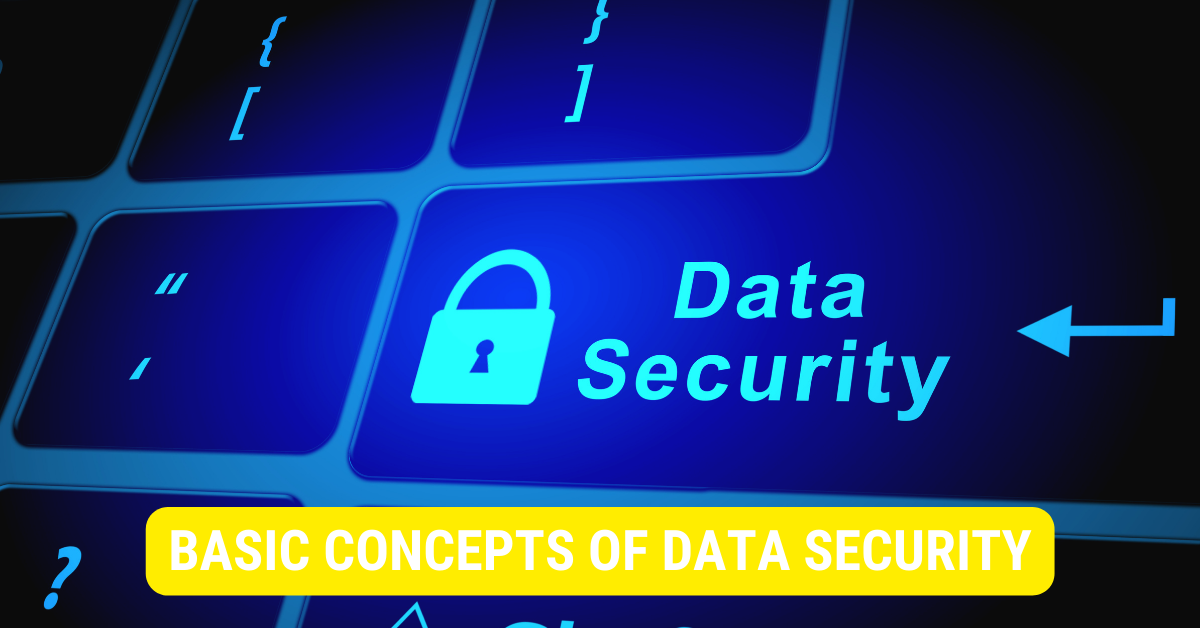Data security is one of the most critical aspects of any organization’s operations. In today’s digital age, where vast amounts of sensitive information are stored and transmitted over networks, ensuring data confidentiality, integrity, and availability has become paramount. This comprehensive guide will take you through the essential steps and concepts to secure data effectively. By following these guidelines, you can protect your data from unauthorized access, avert data breaches, and safeguard the reputation and trust of your organization.
Understanding the Importance of Data Security
Before delving into the technical aspects of securing data, it is crucial to understand the significance of data security. Data breaches can have severe consequences for individuals and organizations alike. From financial losses to damage to status and customer trust, the impact can be devastating. Additionally, non-compliance with data protection regulations may lead to legal repercussions. By prioritizing data security, you can mitigate these risks and ensure the continuity and stability of your operations.
The Consequences of Data Breaches

Data breaches can result in various adverse consequences. One of the immediate impacts is financial loss, which includes costs associated with investigating the breach, notifying affected individuals, and potential legal fees. Moreover, organizations may incur reputational damage and loss of customer trust, leading to decreased business opportunities and potential revenue loss. Additionally, data breaches may expose sensitive information, such as personal, financial, or proprietary data, which malicious actors can exploit for identity theft, fraud, or competitive advantage.
Furthermore, data breaches can also have long-term effects on individuals. For example, victims of identity theft may experience significant financial hardships, spend countless hours resolving fraudulent activities, and suffer emotional distress. (www.plu68.com) The consequences of a data breach can extend far beyond the initial incident, impacting the lives of individuals for years to come.
Organizations that experience data breaches often face legal consequences as well. Depending on the jurisdiction and the nature of the breach, companies may be subject to fines, penalties, and legal action from regulatory authorities and affected individuals. These legal repercussions can further exacerbate the financial impact of a data breach and tarnish the organization’s reputation.
The Value of Secure Data in Business
On the other hand, ensuring secure data provides numerous benefits to organizations. It allows them to attain a competitive edge, as customers prioritize working with companies that protect their sensitive information. Secure data also promotes customer loyalty and trust, fostering long-term relationships. Customers are likelier to continue doing business with companies with a proven track record of safeguarding their data.
In addition to customer loyalty, secure data helps organizations comply with industry regulations and standards. By implementing robust data security measures, Enterprises have the opportunity to showcase their dedication to safeguarding confidential data and maintaining compliance with relevant laws. This helps avoid legal repercussions and enhances the organization’s reputation as a trustworthy and responsible entity.
Furthermore, organizations can safeguard their competitive advantage and market position by securing valuable intellectual property and trade secrets. In today’s highly competitive business landscape, innovation and unique offerings are key drivers of success. Protecting these assets through data security measures ensures that competitors cannot gain unauthorized access to proprietary information, giving the organization a distinct edge in the market.
Basic Concepts of Data Security

Before implementing specific measures, it is essential to grasp fundamental concepts in data security that form the groundwork for robust protection strategies.
Data security is a critical aspect of any organization’s operations. It safeguards sensitive information from unauthorized access, use, disclosure, disruption, modification, or destruction. In today’s digital age, where data breaches and cyberattacks are on the rise, understanding the basic concepts of data security is crucial for ensuring data confidentiality, integrity, and availability.
One of the fundamental concepts in data security is data encryption. Data encryption is a technique that converts data into an unreadable format using cryptographic algorithms. Encrypted data can only be accessed by parties with the appropriate decryption keys. Encrypting sensitive data, even if intercepted, remains unintelligible and useless to unauthorized individuals.
Another important concept is authentication. Authentication is verifying the identity of an individual or entity attempting to access a system or data. It typically involves the use of passwords, biometrics, or security tokens. Strong authentication mechanisms ensure that only authorized individuals can access sensitive data.
Authorization is closely related to authentication. While authentication verifies the identity of a user, authorization determines the level of access an authenticated user has to specific data or system resources. By implementing strong authentication and authorization mechanisms, you can ensure that only authorized and secure individuals can access sensitive data.
Data security also involves implementing measures to protect data from unauthorized access or disclosure during transmission. This is achieved through secure communication protocols such as SSL/TLS, which encrypts data in transit, making it difficult for attackers to intercept and read the information.
In addition to encryption, authentication, and authorization, data security encompasses other important concepts such as data backup and recovery, classification, and retention. Regularly backing up data ensures that the organization can recover and restore lost data even in the event of a system failure or data loss. Data classification involves categorizing data based on sensitivity and implementing appropriate security controls accordingly. Data retention policies define how long data should be stored and when it should be securely disposed of to minimize the risk of unauthorized access.
By understanding these basic concepts of data security and implementing appropriate measures, organizations can significantly minimize the danger of data breaches and protect sensitive information from falling into the wrong hands.
Step-by-Step Guide to Securing Data
Now that you have a strong foundation in the importance and fundamental concepts of data security let’s explore the step-by-step process of securing data.
Identifying the Data that Needs Protection
The first step in securing data is identifying the types requiring protection. This includes personal information, financial records, intellectual property, or any other sensitive information that, if compromised, could result in harm or financial loss. You can arrange your efforts and allocate resources by conducting a thorough data inventory and classification.
While identifying the data that needs protection, it is essential to consider the different regulatory requirements that may apply to your organization. Depending on your industry, you may need to comply with specific data protection laws, such as the General Data Protection Regulation (GDPR) or the Health Insurance Portability and Accountability Act (HIPAA). Understanding these regulations will help you establish security measures to meet compliance standards.
Furthermore, involving key stakeholders from various departments within your organization is crucial during the data identification phase. This collaborative approach ensures that all relevant data is considered and that the protection measures implemented align with the specific needs of each department.
Implementing Strong Access Controls
One of the key pillars of data security is controlling and monitoring access to sensitive data. This involves implementing strong authentication mechanisms, such as multi-factor authentication, and enforcing strict access control policies. By granting access only to authorized individuals based on roles and responsibilities, you can limit the potential for unauthorized access and data breaches.
When implementing access controls, it is essential to consider the principle of least privilege. This principle advocates granting users the minimum access necessary to perform their job functions effectively. By adhering to this principle, you reduce the risk of accidental or intentional misuse of sensitive data by authorized individuals.
In addition to access controls, it is crucial to establish robust monitoring mechanisms to detect and respond to unauthorized access attempts or suspicious activities. Implementing intrusion detection systems, log monitoring tools, and real-time alerts can help identify potential security incidents promptly.
Using Encryption for Data Protection
To add a layer of security, consider encrypting sensitive data at rest and in transit. Use robust encryption algorithms and ensure that encryption keys are adequately protected. Encryption provides extra protection, even if other security measures fail or a breach occurs.
When implementing encryption, it is important to consider the different encryption methods available and choose the one that best suits your organization’s needs. Options include symmetric encryption, asymmetric encryption, and hashing algorithms. Each method has strengths and weaknesses, so cautious consideration should be given to selecting the most appropriate one for your specific use cases.
In addition to encryption, implementing data loss prevention (DLP) solutions can help prevent unauthorized data disclosure. DLP solutions can detect and block the transmission of sensitive data via various channels, such as email, web applications, or removable storage devices.
Regularly Updating and Patching Systems
Software vulnerabilities are frequently discovered, making it crucial to retain all systems and software up to date with the latest security patches. Regularly check for updates and patches provided by software vendors, implement a patch management process, and ensure timely installation. Doing so can close potential security vulnerabilities and reduce the risk of exploitation.
In addition to patching software, it is important to keep hardware firmware up to date. Firmware updates often include security enhancements that address vulnerabilities in the underlying hardware components. Regularly checking for firmware updates provided by hardware manufacturers and applying them promptly is essential for maintaining a secure infrastructure.
Implementing a vulnerability management program can further enhance your system’s security posture. Regularly scanning your network and systems for vulnerabilities, prioritizing them based on severity, and remediation can help identify and address potential weaknesses before malicious actors exploit them.
Backing Up Data Regularly
Unpredicted events, such as hardware failures, natural disasters, or malicious attacks, can lead to data loss. Implement a robust backup strategy to ensure critical data is regularly backed up and stored securely. This will enable you to restore data during an incident or breach, minimizing downtime and potential loss.
When designing a backup strategy, consider factors such as the frequency of backups, the retention period for backups, and the storage location. It is advisable to have multiple copies of backups stored in different locations, including offsite or cloud-based storage, to mitigate the risk of data loss due to a single point of failure.
Regularly testing the integrity and recoverability of backups is also essential. Conducting periodic data restoration exercises ensures that backups function correctly and that data can be recovered successfully.
Furthermore, consider implementing a disaster recovery plan that outlines the steps to be taken in the event of a major data loss incident. This plan should include procedures for activating backup systems, notifying relevant stakeholders, and restoring critical services to minimize the impact on business operations.
Advanced-Data Security Techniques

While the previously mentioned steps provide a solid foundation for data security, advanced techniques can further enhance your defenses.
Intrusion Detection Systems
Intrusion detection systems (IDS) monitor network traffic and system activity to detect and respond to potential security threats. By analyzing patterns, behaviors, and anomalies, IDS can identify unauthorized access attempts and suspicious activity, enabling prompt response and mitigation measures.
Security Information and Event Management
Security Information and Event Management (SIEM) solutions aggregate and analyze security event logs from various sources to provide comprehensive visibility into potential security incidents. SIEM systems can detect patterns, correlate events, and generate alerts, facilitating proactive threat hunting and rapid incident response.
Data Loss Prevention Tools
Data Loss Prevention (DLP) tools identify, monitor, and protect sensitive data at rest and in transit. DLP solutions can prevent data leakage by enforcing policies, detecting unauthorized access attempts, and blocking sensitive data from being transmitted through unauthorized channels.
By leveraging these advanced techniques, organizations can enhance their data security posture and better defend against sophisticated attacks.
Key Takeaways
- Implement a comprehensive data security strategy covering all data handling aspects, including storage, transmission, and processing.
- Identify and classify sensitive data to prioritize security measures based on data sensitivity and potential risks.
- Use strong and unique passwords or passphrase combinations for all accounts and regularly update them.
- Encrypt data at rest using robust encryption algorithms and appropriate key management practices.
- Secure data in transit using encrypted communication protocols such as HTTPS or VPNs.
- Employ access controls and least privilege principles to restrict data access to authorized individuals or roles.
- Regularly update software, firmware, and security patches to protect against known vulnerabilities.
- Train employees on data security best practices, including password hygiene, phishing awareness, and social engineering prevention.
FAQs
What are some common data security threats?
Common data security threats include unauthorized access, data breaches, malware attacks, phishing, ransomware, insider threats, physical theft or loss of devices, and social engineering attempts.
How can I determine the sensitivity of data?
Determining data sensitivity involves assessing its value, impact on individuals or the organization if compromised, legal or regulatory requirements, and contractual obligations. Consider personally identifiable information (PII), financial data, health records, or trade secrets.
Are there specific data security regulations to consider?
Yes, there are several data security regulations and frameworks that organizations should consider, depending on their industry and geographical location. Examples include the General Data Protection Regulation (GDPR), Payment Card Industry Data Security Standard (PCI DSS), and Health Insurance Portability and Accountability Act (HIPAA).
Conclusion
In conclusion, securing data properly requires a comprehensive approach that addresses the importance of data security, fundamental concepts, and a step-by-step process. Organizations can prioritize data security by understanding the consequences of data breaches and the value of secure data in business. Implementing basic concepts, such as data encryption and strong access controls, is essential to effective data protection. Regularly updating systems, backing up data, and leveraging advanced techniques, such as IDS, SIEM, and DLP, further strengthen the security infrastructure. By following this step-by-step guide, organizations can minimize the risk of data breaches, protect sensitive information, and maintain the trust and confidence of their stakeholders.
